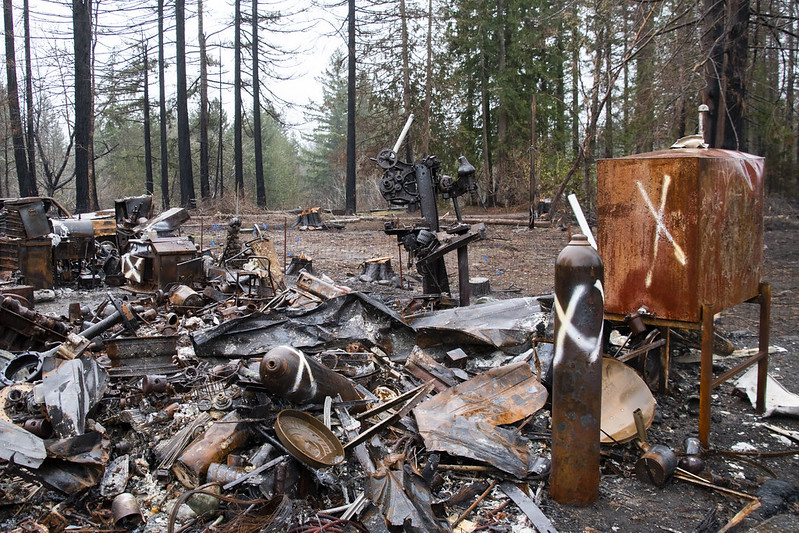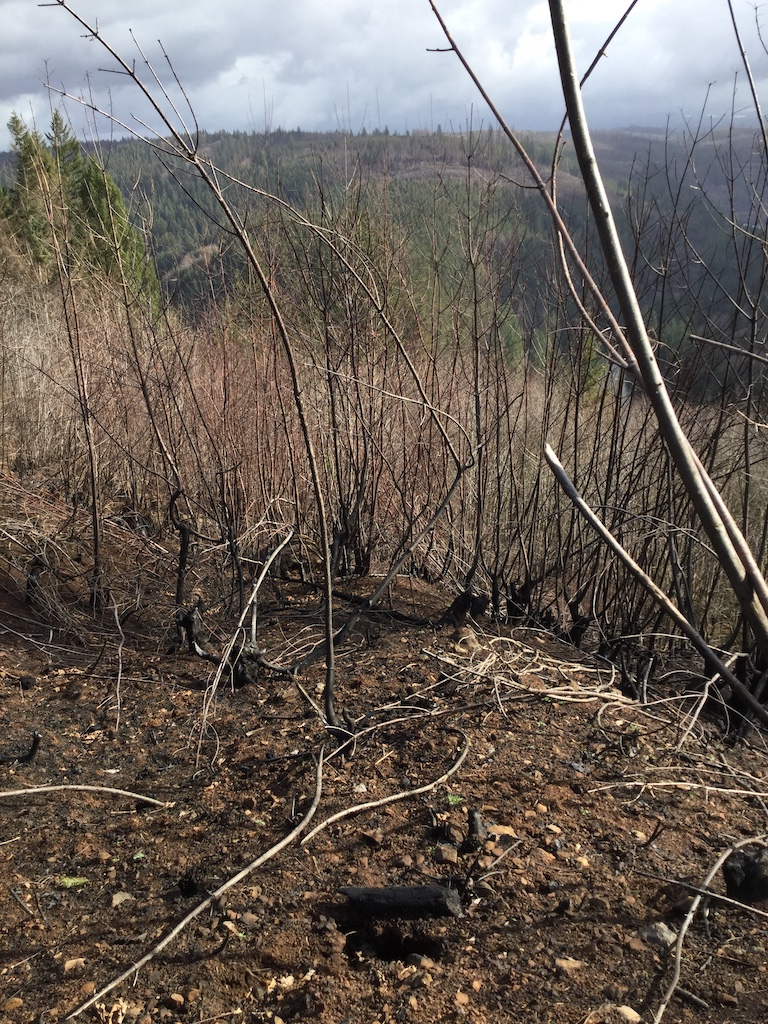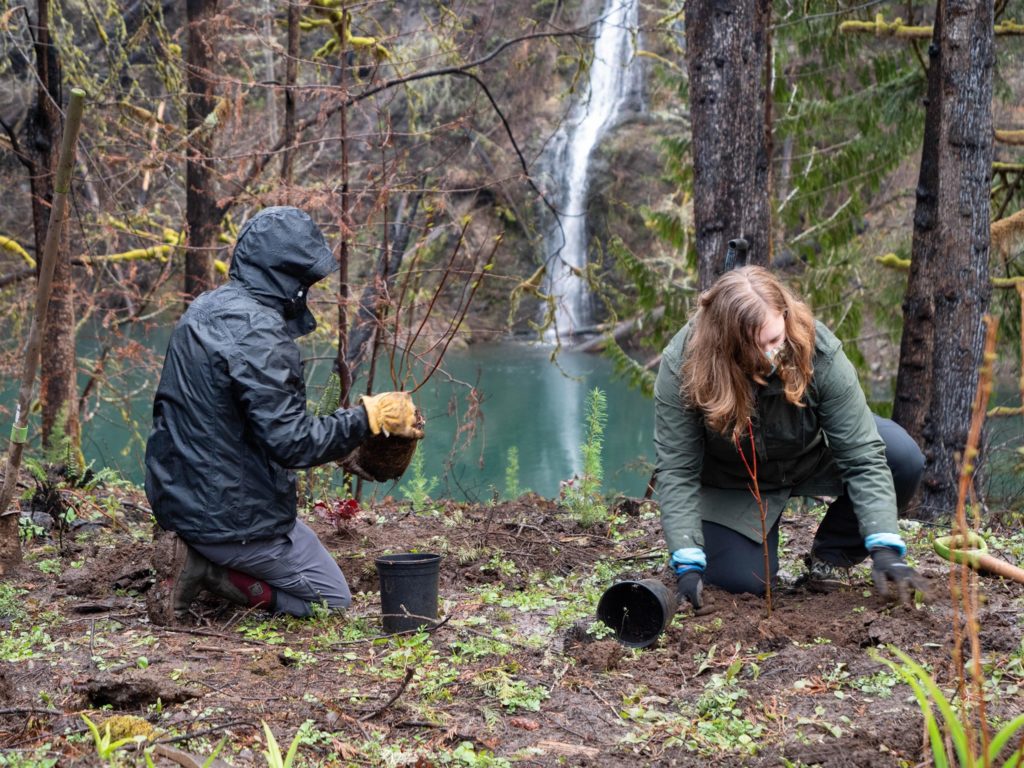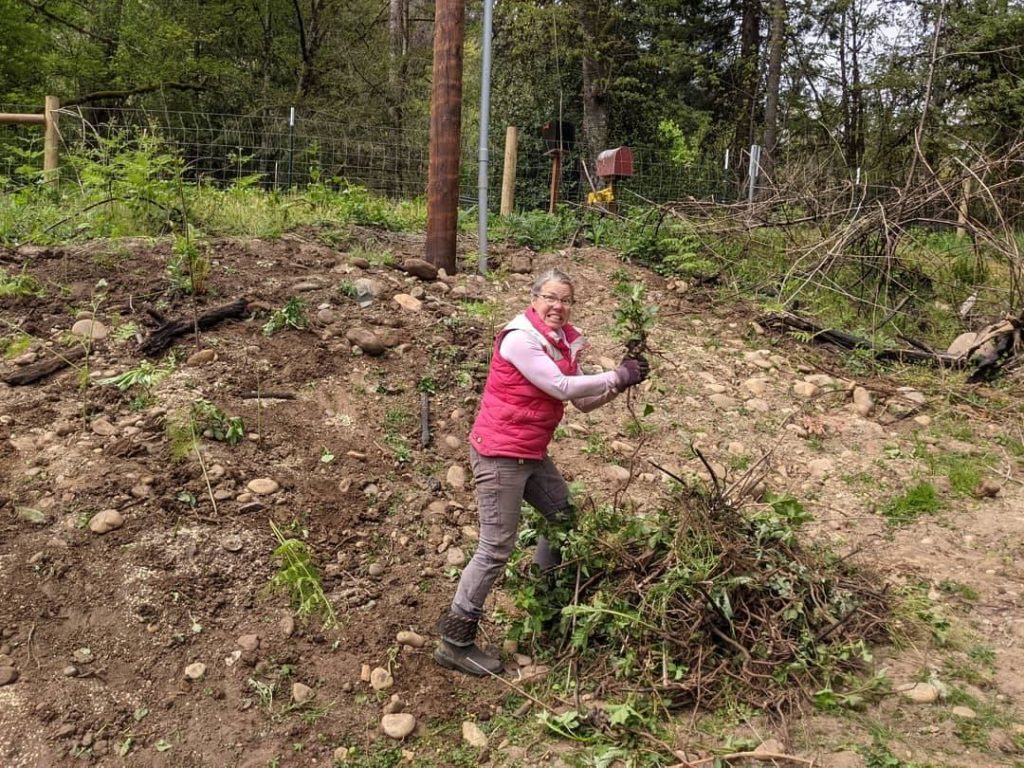Landowner Assistance in Post-Fire Natural Resource Recovery: Lessons Learned from Oregon

2020 Oregon Fires / By Phoenix7777
Submitted by Kristen Purdy, Sustainable Northwest and Maura Olivos
The 2020 wildfire season was unprecedented in Oregon. Communities are still in crisis, working to rebuild homes and meet basic needs. An estimated 797,000 acres of forestland burned in Oregon during the Labor Day fires of 2020. Of that land, roughly 119,000 acres were privately owned. As a result, there’s been a strain on current resources available to small non-industrial landowners when it comes to post-fire natural resource recovery. The Western Oregon Cascades Recovery Effort (WOCRE) formed to meet the urgent need for scaling forest recovery due to the 2020 wildfires. WOCRE is convening organizations who work directly with landowners to share resources and lessons learned and build resilience across Western Oregon. As we gathered to work on 2020 recovery, all while right in the middle of the 2021 Fire Season, we wanted to share lessons learned on post-fire natural resource recovery for landowners in hopes this might help other communities be more prepared.
The following advice has been shared with us from Eugene Water & Electric Board (EWEB). EWEB has been working hard on post-fire restoration to protect streams feeding into Eugene’s drinking water supply from the McKenzie River. Eugene and the surrounding areas were impacted by the Holiday Farm Fire, covering 173,393 acres and impacting the McKenzie River Valley (After the Fire, 2021). Based on their experience with the 2020 Fires, Karl Morgenstern and Nancy Toth from EWEB shared the following recommendations.
Before the Fire…
Determine all the moving pieces in access agreements for landowners and try to streamline the process to one agreement (from EWEB):

Property destroyed by the 2020 Labor Day weekend wildfires / By ODOT
A huge role we’re playing is contacting landowners impacted by the 2020 fires, providing information on services and assistance that we can provide and requesting access agreements, which legally enables us to survey land and help landowners access the resources they need for natural resource recovery. It is critical to keep in mind that landowners have just gone through (and are still going through) a traumatic time. Following the fires, several different agencies were contacting landowners and requesting access to their property for various reasons. Landowners were often confused as to which agency was doing what, and about the different agreements they were being asked to sign. It is important to understand the role each agency plays in post-fire response and be able to communicate this to landowners.
Being aware about the various access agreements someone might be exposed to (for example, counties may have their own requirements for access agreements) is crucial. To get ahead of this before the fires, take the time to set up an access agreement that fulfills the regulatory requirements for other local and state agencies working on recovery, and includes a variety of potential land management actions that landowners can choose by checking boxes within the agreement. Make sure you coordinate with other entities and agencies in the effort to develop a universal access agreement. We created an access agreement using DocuSign that worked for the project partners we were working with under our Pure Water Partners Program. Landowners found this easy to sign because it had all requirements in one access agreement, and the access agreement was mobile-friendly for those who did not have access to computers.
In addition to streamlining the agreement process, we recommend providing landowners with a single, consistent point of contact for the variety of tasks associated with recovery. It’s great if just one person works directly with a landowner, surveying their property, providing technical assistance, and connecting them with multiple resources.

Post-Fire Conditions in the Clackamas River Basin / By CRBC
Understand the FEMA process and triple-check to make sure you have authority (from EWEB):
In addition to streamlining access agreements, we learned the hard way that you need to triple-check to make sure you have the authority, according to the Federal Emergency Management Agency (FEMA), to do the work you’re doing. We ran into issues with trying to get reimbursements from FEMA. To avoid problems during post-fire recovery, before the fires, make sure you are aware of the FEMA approval process and understand what is required from landowners. One way to make sure you’re on track with FEMA is to contact your state’s Office of Emergency Management early on in the event, as they can help connect you to relevant contacts within FEMA, as well as the broad variety of federal agencies that will come to work within the FEMA structure.
Be actively involved in emergency preparedness and create standing contracts (from EWEB):
Being active in emergency preparedness–whether on a community-based management, whether it be on a community level, a local level, or on the state level–can open doors to access emergency funds. Because EWEB had a network of partners in place who already started working with landlords on other restoration activities prior to the fires, we were able to quickly approve $1 million in emergency funds, which helped kickstart the work of other programs. A huge, huge help is having standing contracts in place to do the work an emergency entails before the emergency hits. Now, we have rolling contracts.
After the Fire…

Post-Fire Conditions in the Clackamas River Basin / By CRBC
Make outreach materials and resources widely available (from EWEB):
We learned it’s crucial to be flexible with the outreach methods used. We used flyers, mail, and social media to share resources with community members impacted by wildfire. People were missing their phones and computers, having to leave them behind as they fled the fast-moving fires. Property damage and inaccessible roads made it difficult to get information out through mail. As a result, we identified key community centers that were being mobilized during the wildfires and during post-fire recovery, and printed out flyers for outreach staff to distribute.
In Clackamas Co., Oregon, the Clackamas River Basin Council (CRBC) has been busy working on post-fire restoration projects. Clackamas County was impacted heavily during the Labor Day fires of 2020, including the Lionshead, Beachie Creek, and Riverside fires. Collectively, these fires burned over 500,000 acres (After the Fire, 2021). The CRBC has been working hard on post-fire restoration within the Clackamas Basin, and Ari Sindel from the Council had the following recommendation to share.

Riverside Fire Damage from Above / By Inciweb

Post-Fire Conditions in the Clackamas River Basin / By CRBC
Cast a wide net for resources to fit community needs (From CRBC):
It’s important to look for diverse funding opportunities, because each program and grant we identified carried restrictions. We applied for a wildfire assistance grant through the Oregon Watershed Enhancement Board (OWEB), which secured funding for 2020 wildfire response. These grants were available to support recovery from 13 of the fires that affected our state. Fire incidents eligible for recovery funding were chosen with the assistance of public comment. In our basin, the largest fire of the 2020 season was the Riverside Fire, which was chosen for eligibility. With the emergency funds, we were able to make a huge difference for our community by providing assistance to private landowners who were not eligible for other programs. However, several private landowners impacted by the much smaller Dowty Road Fire, who were also ineligible for other programs, reached out to us for help. The Dowty Road Fire did a lot of damage to important natural areas, but the OWEB funding was not applicable. With creativity and gumption, we were able to help nearly all of the landowners who reached out to us. We continue to provide assistance, and each of the funding sources and recovery programs that we have identified have been a component of that effort.

Post-Fire Conditions in the Clackamas River Basin / By CRBC
Moving Forward
One of the most crucial things WOCRE members suggested was that now, in the middle of fire season, is the best time to start writing down the things you wish you’d done for the next fire season. WOCRE will continue to work on 2020 wildfire recovery. Please feel free to share your lessons learned and stay safe, communicative and aware out there. For more information on WOCRE contact Kristen Purdy at kpurdy@sustainablenorthwest.org.
Resources for Landowners in Oregon:
Willamette Partnership’s Wildfire Recovery Page
